Innovative Solutions: Learn How to Brainstorm Like a Pro
Learn how to brainstorm effectively with these tips and techniques. Improve your idea generation and problem-solving skills with a structured approach to brainstorming.
Edraw Content Team
Create Mind Maps Today!
EdrawMind is a mind mapping tool equipped with 700+ cliparts. This article presents a step-by-step guide to creating a creative mind map to present your idea elegantly. Try EdrawMind and create hundreds of mind maps today!
Brainstorming is a powerful technique used by individuals and teams to generate creative and innovative solutions to problems. By tapping into the collective intelligence and creativity of a group, brainstorming can lead to new ideas and insights that would not be possible through individual thinking. However, brainstorming requires a structured approach to be effective, and there are certain techniques and strategies that can help individuals and teams make the most of their brainstorming sessions.
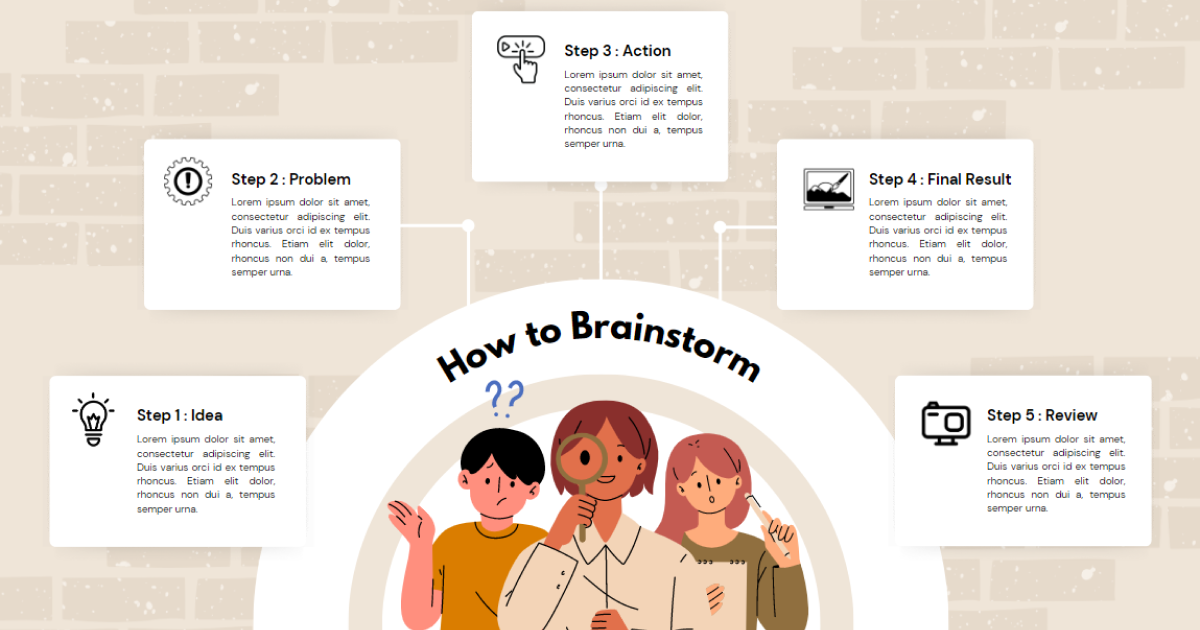
1. Benefits of Brainstorming
Brainstorming has several benefits for individuals and teams, including:
- Generating a wide range of ideas:
Brainstorming encourages participants to come up with as many ideas as possible, even if they seem unrealistic or far-fetched. This leads to a greater range of potential solutions than would be possible through individual thinking.
- Encouraging collaboration and teamwork:
Brainstorming is a collaborative process that encourages participants to build on each other's ideas and work together towards a common goal.
- Fostering creativity and innovation:
Brainstorming encourages participants to think outside the box and consider new and unconventional solutions to problems.
- Enhancing problem-solving skills:
Brainstorming helps participants develop their problem-solving skills by encouraging them to analyze problems from different perspectives and generate a wide range of potential solutions.
2. Preparing for Brainstorming
Before starting a brainstorming session, it's important to prepare and set the stage for effective idea generation. This involves:
- Defining the problem or objective to be addressed: It's important to have a clear understanding of the problem or objective that the brainstorming session is meant to address. This helps participants focus their thinking and generate ideas that are relevant and useful.
- Identifying the target audience and their needs: Understanding the needs and preferences of the target audience can help participants generate ideas that are more likely to resonate with them.
- Setting a time limit and agenda for the session: Setting a time limit and agenda helps keep the brainstorming session focused and productive. Participants should be encouraged to stay on track and avoid getting sidetracked by unrelated topics.
- Creating a conducive environment for brainstorming: The physical environment in which the brainstorming session takes place can have a significant impact on its effectiveness. A comfortable, well-lit space with minimal distractions can help participants focus their thinking and generate ideas more effectively.
- Providing necessary materials or tools for the session: Depending on the nature of the brainstorming session, participants may need access to certain materials or tools, such as whiteboards, sticky notes, or brainstorming software.
3. How to Brainstorm With EdrawMind
When it comes to brainstorming, one of the most powerful tools that you can have in your arsenal is a mind mapping software, and one of the best options available is EdrawMind. With this software, you can create visual representations of your ideas, concepts, and thought processes in a way that is easy to follow, manipulate, and share with others. But how do you go about using this tool to facilitate brainstorming sessions effectively? Here are some steps you can follow to get the most out of EdrawMind for "How to Brainstorming".
Step1 Start a new document
- Open EdrawMind and click on "New" to start a new document. You can choose from a variety of templates or start with a blank canvas.

Step2 Add ideas and concepts
- Begin adding your ideas and concepts to the document by using the various tools and options available in EdrawMind. You can use the different shapes and symbols to represent ideas, add text, and connect ideas with lines and arrows.

Step3 Organize and categorize ideas
- Once you have a list of ideas, use EdrawMind's organizing and categorizing features to group similar ideas together. You can use color coding, branches, and subtopics to make it easier to understand and visualize your ideas.

Step4 Export or share your brainstorm
- After you've organized and refined your brainstorm, you can export it as a document or share it with others. You can export it as a PDF, image, or HTML file, or share it directly with your team or colleagues through the built-in sharing features.

4. Brainstorming Techniques
There are several different brainstorming techniques that can be used to generate ideas and insights. Some of the most effective techniques include:
- Mind mapping: Mind mapping is a visual technique that involves creating a diagram to represent ideas and their relationships to each other. This can help participants generate ideas and see how they fit together.
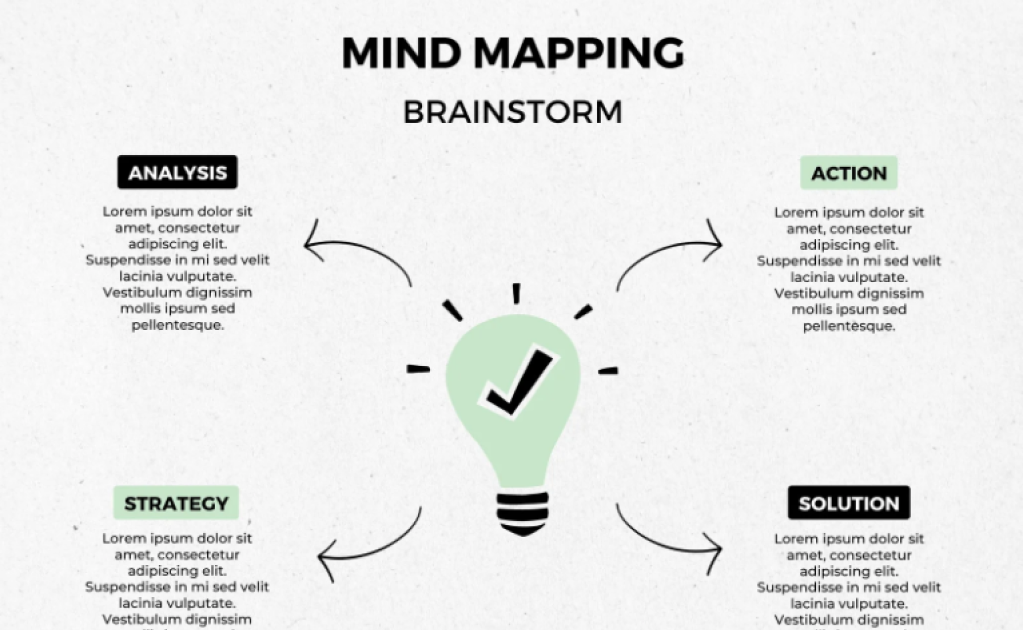
- SWOT analysis: SWOT analysis involves analyzing the strengths, weaknesses, opportunities, and threats associated with a particular problem or objective. This can help participants generate ideas that leverage strengths and opportunities while addressing weaknesses and threats.
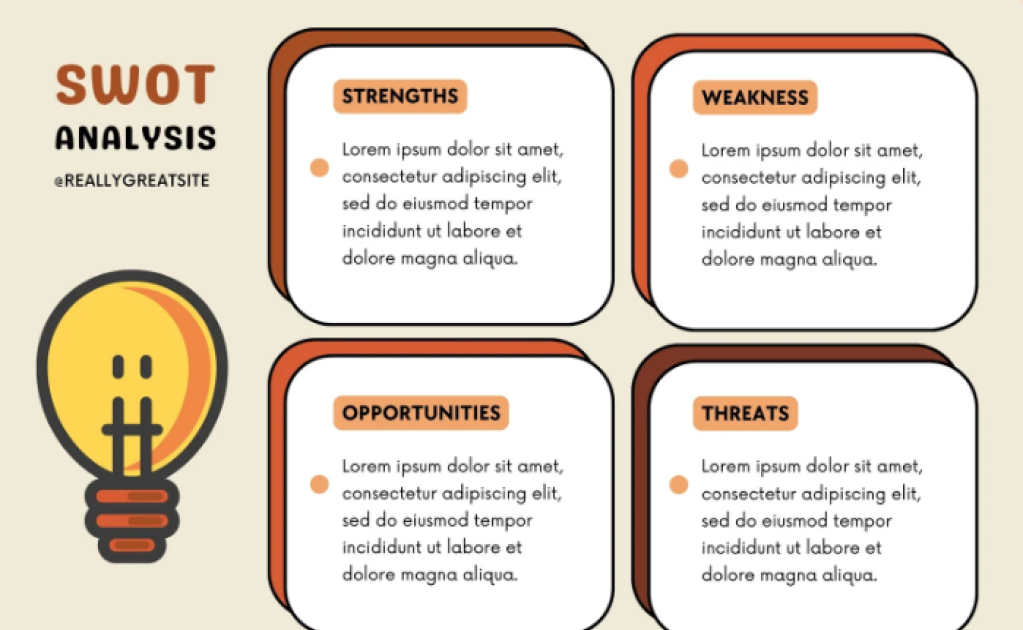
- Round-robin brainstorming: Round-robin brainstorming involves having participants take turns suggesting ideas, with each participant building on the ideas of the previous participant. This can help encourage collaboration and build momentum.
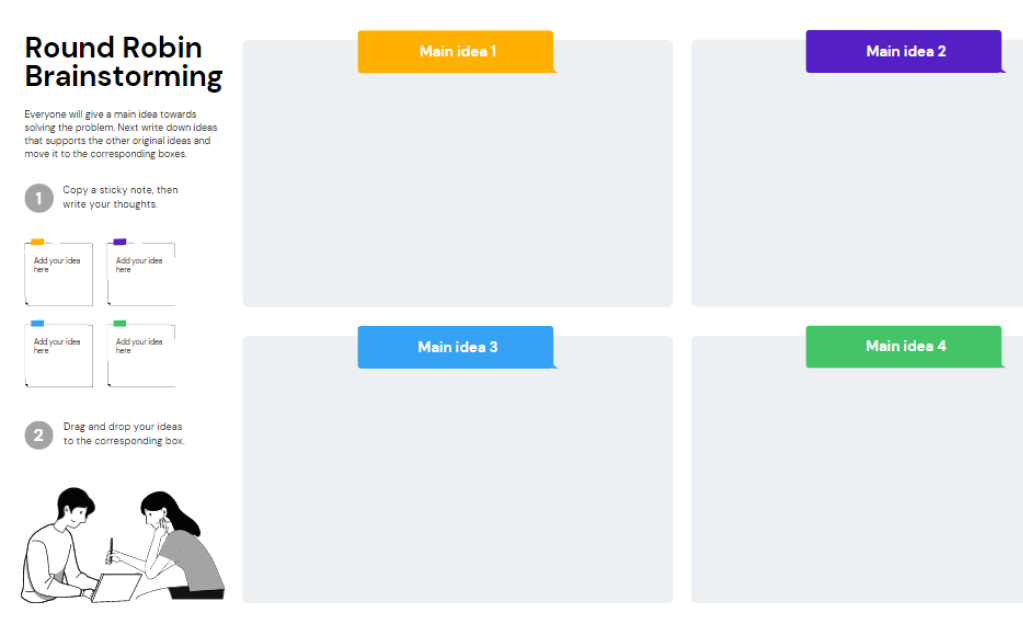
- Starbursting: Starbursting involves generating questions about a particular problem or objective, rather than trying to come up with solutions. This can help participants generate a wide range of potential solutions by considering different aspects of the problem.
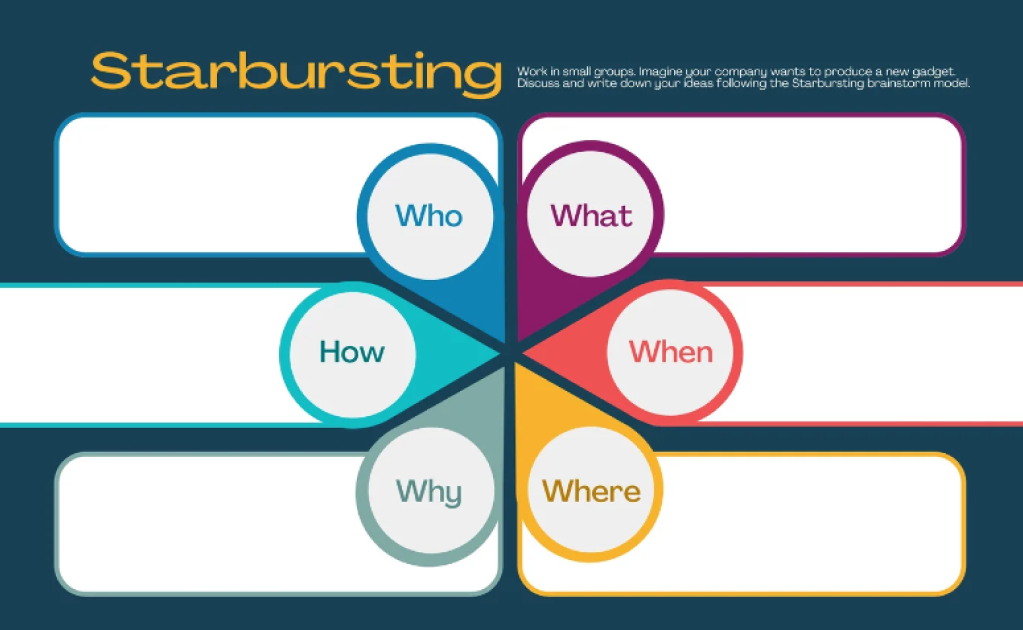
- Brainwriting: Brainwriting involves having participants write down their ideas individually, rather than sharing them out loud. This can help participants generate.
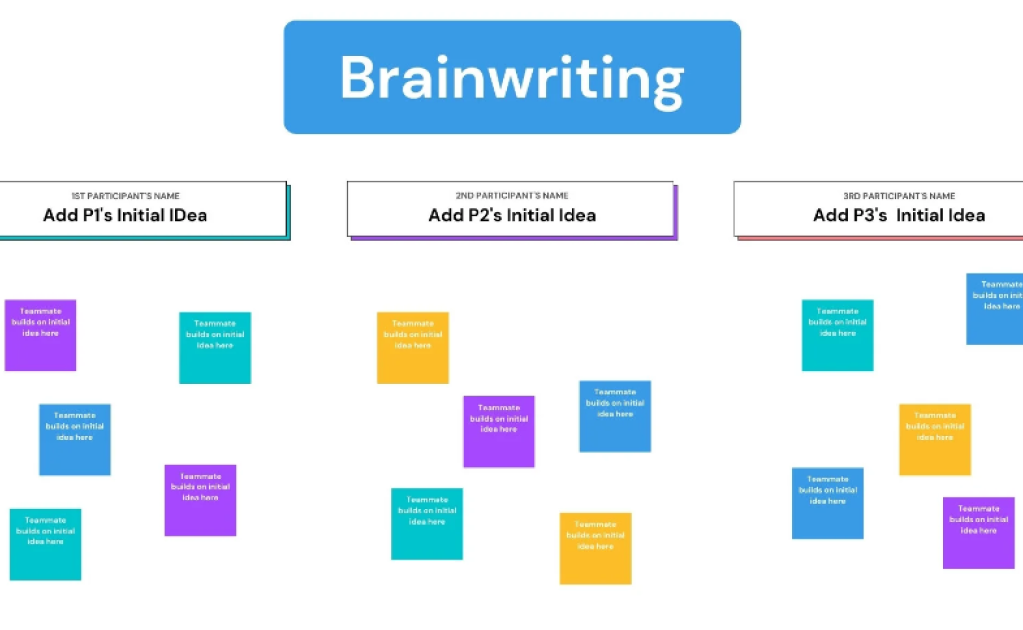
5. Evaluating and Selecting Ideas
Once the brainstorming session is complete, it's time to evaluate and select the best ideas for implementation. This stage is critical as it determines which ideas will be developed further and which will be discarded. Here are some steps to follow:
- Establish criteria for evaluating ideas: To objectively evaluate ideas, you must establish criteria that will guide your decision-making. The criteria may vary depending on the problem you're trying to solve and your organization's goals. Common criteria include feasibility, impact, novelty, and alignment with organizational values.
- Prioritize ideas based on importance and feasibility: After establishing criteria, you should prioritize ideas based on their importance and feasibility. Importance refers to the degree to which an idea addresses the problem or objective, while feasibility refers to the ease of implementation. High-priority ideas should be those that are both important and feasible.
- Refine and develop selected ideas: Once you've selected the most promising ideas, it's time to refine and develop them further. This involves fleshing out the details, identifying potential challenges, and developing a plan for implementation. You should involve team members in this stage to ensure buy-in and to get different perspectives.
6. Putting Ideas into Action
The final stage of effective brainstorming is putting the selected ideas into action. This involves developing an action plan, assigning tasks and responsibilities, setting deadlines and milestones, and monitoring progress. Here's how to do it:
- Develop an action plan based on selected ideas: An action plan is a document that outlines the steps needed to achieve the objectives. It should include specific goals, timelines, and the resources needed to accomplish them. You can use project management software to create an action plan and track progress.
- Assign tasks and responsibilities to team members: Each task in the action plan should be assigned to a specific team member who is responsible for its completion. This ensures accountability and helps to avoid confusion.
- Set deadlines and milestones for the project: Deadlines and milestones help to keep the project on track and ensure that tasks are completed on time. Make sure to set realistic deadlines that take into account potential challenges.
- Monitor progress and make adjustments as needed: It's important to monitor progress regularly and make adjustments as needed. If a task is behind schedule, you may need to allocate more resources or adjust the timeline.
7. Conclusion
In conclusion, knowing how to brainstorm effectively is essential for success in today's fast-paced and competitive environment. With the help of EdrawMind, you can easily organize and structure your brainstorming process to maximize creativity and collaboration. By preparing adequately, applying effective brainstorming techniques, conducting the session appropriately, evaluating and selecting ideas, and putting them into action, you can turn your ideas into tangible outcomes.
With EdrawMind's user-friendly interface and vast range of tools, you can streamline your brainstorming process and optimize your team's efficiency. With practice and dedication, you can become a skilled brainstormer and contribute to your team's success.
You May Also Like
Creating Mind Maps With AI: A Quick Step-by-Step Guide
HOW-TO & TIPS
Creating a SWOT Analysis Chart With EdrawMind AI
HOW-TO & TIPS
How to Make a Mind Map in Word
HOW-TO & TIPS
How to Open and Edit a Mind Map in Office 365
HOW-TO & TIPS
How to Create a OneNote Mind Map
HOW-TO & TIPS

